
Whether you call them safety rodeos, equipment rodeos, or some other name, spring training kickoff events can set your team off on the right foot and ensure everyone is on the same page when it comes to safety and equipment operations.
Kristin Hunt, safety rodeo coordinator for Monarch Landscape Management, based in Houston, Texas, says their company started conducting safety rodeos in 2020. She says the team appreciates the emphasis on safety, reviewing policies, and acquiring new skills.
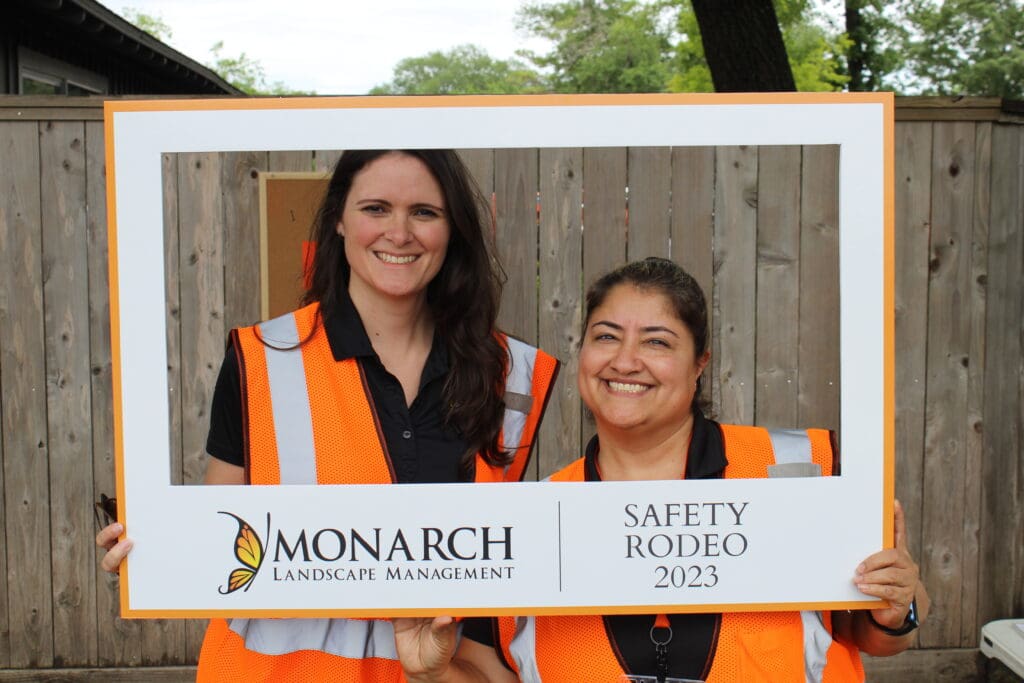
“Initially, when we introduced the rodeo, we learned some team members, who had been with us for years, had not operated certain equipment,” Hunt says. “Now, each year, we ensure that everyone gains proficiency in using all types of equipment. This approach prevents team members from feeling limited to a specific role.”
Hunt says that while rodeos demand a commitment of time and finances, no one complains because the event is enjoyable and rewarding.
Will Dutton, director of workforce safety and training for Russell Landscape Group, based in Sugar Hill, Georgia, says that they’ve been doing equipment rodeos for as long as he’s been with the company, but they became more intentional about these events 10 years ago. He says that rodeos bring more safety awareness to their team and help employees become more effective in operating and maintaining equipment.
“The obvious answer is we do them to prevent injuries, prevent damage, but it saves us money in the long run,” Dutton says.
Plan Ahead
Hunt says that the planning process for their first rodeo took six months as they mapped out topics, assignments and stations.
“Year after year, we continue to enhance the information shared,” Hunt says. “The agenda undergoes an annual review by our managers and assigned trainers for updates. The team eagerly anticipates both the event and the annual fish fry!”
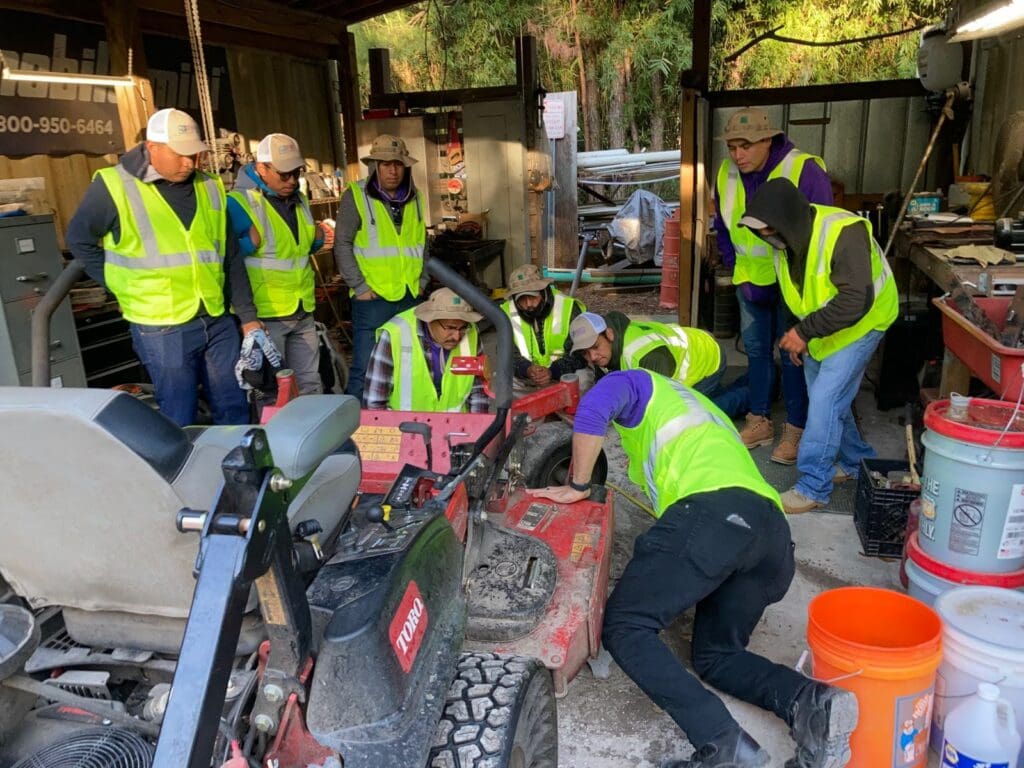
Dutton says they spend around six months intentionally planning their upcoming rodeo. He says they start assessing last year’s rodeo’s success and downfalls the day after the event. They ask for feedback from their managers about the rodeo, and also have a suggestion box where people can submit their thoughts on the event.
“This particular year, we’ve taken four past rodeos and condensed them into one,” Dutton says. “It typically is about a six-hour to seven-hour event.”
Dutton says this year, they have outlined five different stations that will each last an hour. They will focus on two-cycle equipment operation and safety, mower operation and safety, equipment maintenance, plant identification and care, and job costing.
Russell Landscape starts their rodeo with an orientation time where they introduce new hires to the company.
“We’ll have employee reminders at that time and that’s about a 45-minute process,” Dutton says. “Typically, that morning, there’ll be coffee and doughnuts served to the guys and girls.”
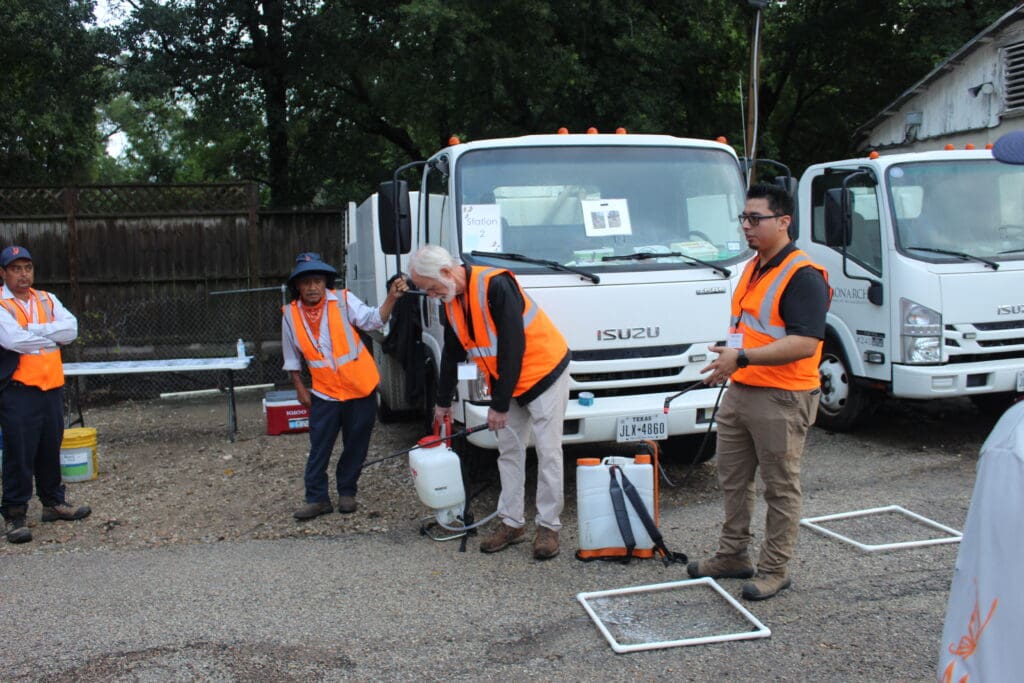
During lunchtime, the teams start conversing about what they learned at the rodeo. Dutton says they’ll ask their people what they came away with.
If you’ve never hosted a rodeo before, survey your team members to figure out what’s important to them and what they’d like to be trained on more. Dutton notes you should have a budget in mind for training and to get involved in a peer group to learn how other companies do their rodeos.
“Make sure you’re intentional with your time and get feedback from your employees on what they need to be trained on,” Dutton says.
Hunt adds that having a planning and rodeo champion is key.
“Think through what you want to cover, plan it out and do not be afraid to fail because it’s a long-term commitment,” Hunt says. “If you’re considering hosting a safety rodeo, collaborate or visit a company that has an established safety rodeo. It’ll provide a clear picture of the effort required for such an event.”
Keep It Interesting
Dutton says one of the keys to a successful rodeo is ensuring everyone is bought in, from the leadership team to the managers leading the stations. He says their rodeo is a paid event and estimates that if it wasn’t a paid event, 65 to 70 percent of the workers might not even attend. Dutton says this is one of the ways they communicate to their team they are doing this because they care.
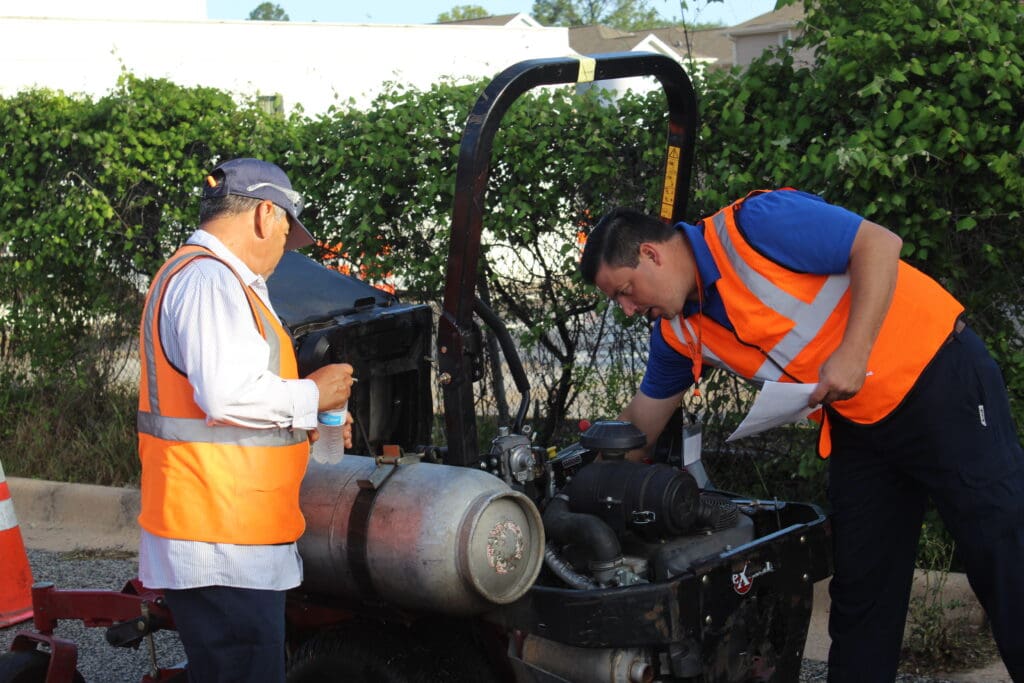
Having hands-on stations can also bring people out of their comfort zone.
“We make it fun,” Dutton says. “There’s going to be laughter. There’s going to be seriousness. There’s going to be people making mistakes, and it could be an account manager or even myself. These guys are going to notice it and I’m going to own it. They’re going to say, ‘Oh, well, we all make mistakes.’ What better place to make that mistake than at the rodeo, where we can retrain it.”
Hunt says they partner with key vendors that share their values of safety and education.
“They typically provide technical training on safe equipment operation or maintenance,” Hunt says. “For example, our Longhorn Irrigation representative provided new irrigation products and technical training too.”

This year Russell Landscape is working with a vendor who will be supplying them the plants they work with a lot for the plant ID stations.
“That’s another thing why we do it so early because I’ve got different areas to reach out to vendors in the area and let them know, ‘Hey, we’re having this. We’d love to have your involvement. We need you here,’” Dutton says. “This year, it’s going to be working with the people that we buy our plants from and having them come in because who knows the plant better than the vendor.”
Overcoming Challenges
Some of the challenges of hosting rodeos include ensuring new hires that come on later are still brought up to speed and making sure everyone is on the same page during the rodeo.
Dutton says they try to schedule their rodeo around new hiring, but it’s not solely based on that, as they have Russell Landscape University as well to help train new employees. Hunt says they, too, try to have their rodeo take place following spring onboarding.
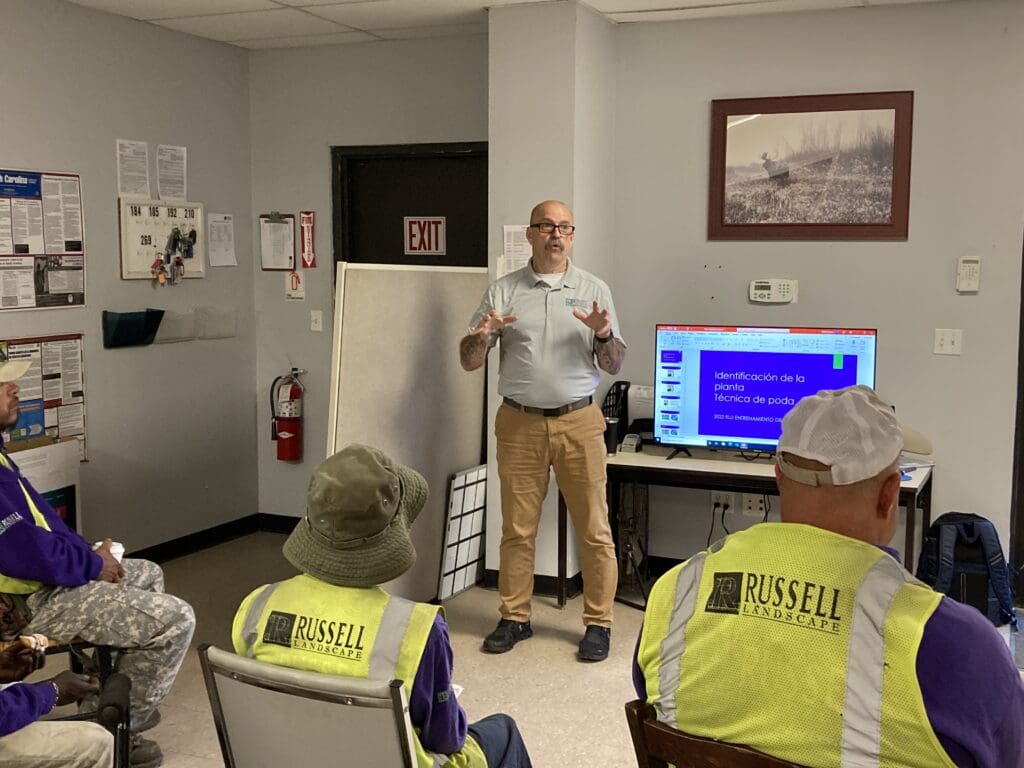
“Those that join the team after the rodeo may not receive the comprehensive, in-depth training but do receive departmental training by those department leaders,” Hunt says.
Dutton and Hunt say that the translation from English to Spanish is another obstacle. Russell Landscape breaks their teams into English and Spanish groups to hold their rodeo in both languages.
“We want everybody to take away what we’re trying to instill in them,” Dutton says. “We have to make sure that the ones that are translating, are translating exactly what we need to get out, which is important. We don’t want one team member to hear one thing and another one to hear something else. Things can get lost in translation.”
Dutton notes that one training does not fit all, even beyond languages, so they have to work to speak to different branches and different learning styles.
“It’s an accumulation of all learning styles,” Dutton says. “There’s audio, there’s visual, there’s going to be hands-on.”


